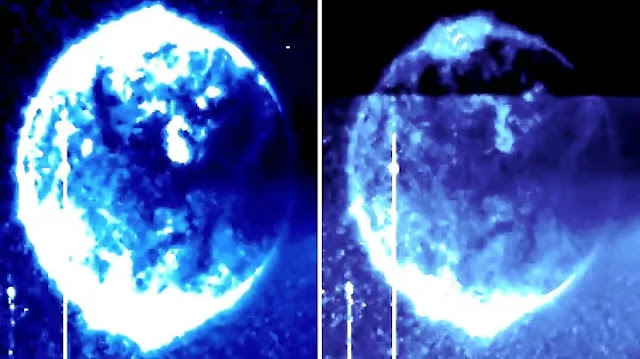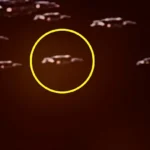The James Webb Space Telescope has produced the first image of another universe, marking a historic milestone in astronomy.
Since ancient times, humans have seen stars and thought about the size of the universe. However, we can say that the mystery of what lies beyond the edge of the universe has already been solved. The discovery revealed by the James Webb Space Telescope has surprised scientists and has had a huge impact on the field of astrophysics. This groundbreaking breakthrough could completely transform our current understanding of the universe.
What is the most advanced telescope ever shown within the boundaries of the cosmos? Prepare for an out-of-this-world experience as we dive into this groundbreaking discovery and its implications for the future of science.
Imagine having a time machine that would allow you to observe the creation of the cosmos. Well, the James Webb Space Telescope allows us to travel back in time billions of years and observe the limits of the universe with greater precision than ever before. The James Webb, thanks to its cutting-edge infrared detection technology, behaves like a superhuman eye capable of seeing objects and phenomena invisible to us. What is the final product? Astronomers have captured astonishing images and gained invaluable information about how the universe works as a whole.
These extraordinary images, which show clusters and galaxies, such as the remote and elusive MACS0647-JD, have greatly pleased the scientific community. The image shows a unique spectacle: a unique group of galaxies shining like lovers in the vast emptiness of space. However, scientists are moved by this image for its enormous amount of information and not just for its beauty.
.jpg)
MACS0647-JD, a faint galaxy discovered by the Hubble Space Telescope a decade ago, has been studied in greater detail thanks to James Webb’s triple lensing, which aims to understand its composition, structure and behaviour. The question of whether MACS0647-JD is a single galaxy or a combination of two groups of stars in one galaxy certainly worries scientists. And I hope James Webb can answer them.
However, James Webb’s discoveries are far from over; there is still much to learn and explore within the confines of the universe. The state-of-the-art telescope has given us a new world of opportunities and is transforming the way we perceive the universe and its enormous complexity. The progress of telescopes has continued, revealing galaxies that contradict our current theory on galaxy formation and evolution. The James Webb Telescope allows us to study the earliest stages of the universe and better understand how the first cosmic structures were formed by observing extremely distant objects.
In addition, telescopes have demonstrated the presence of complex organic molecules in the interstellar medium, supporting the hypothesis that life-supporting elements are present elsewhere in the universe. In the near future, these discoveries increase our expectations of finding signs of life on distant exoplanets and moons.
James Webb has also provided essential data on the composition of planetary atmospheres outside our solar system. By examining starlight as it travels through these atmospheres, scientists can identify the presence of gases such as oxygen, methane and carbon dioxide, providing important information on the habitability of these distant planets.
Furthermore, the precise mapping of asteroid-forming regions has allowed us to study the processes leading to the birth and death of stars in many galaxies. The research contributes to the understanding of the mechanisms driving galactic evolution and to the understanding of the development and dispersion of chemical elements in the cosmos.
An unparalleled technological and scientific feat, the James Webb Space Telescope, whose launch has marked the beginning of a new era in space exploration. Thanks to the Hubble Space Telescope’s ability to see farther and in greater detail than any previous telescope, humanity is advancing toward an unlimited vision of cosmic knowledge.
In the future, we can expect James Webb to reveal many more cosmic mysteries and wonders as he continues his mission. His findings and breakthroughs will be relevant to astronomy and astrophysics, as well as to our understanding of life, the origin of the universe, and our place in it.
These are exciting times for space exploration, and NASA’s James Webb Space Telescope is paving the way for new discoveries and a deeper understanding of the universe around us.



